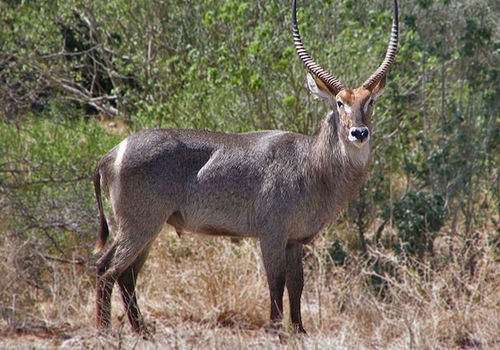
Waterbuck
Kobus ellipsiprymnusWaterbuck
Introduction: The waterbuck (Kobus ellipsiprymnus) is a large antelope and as the name suggests, it is associated with water. They will even take up residence in areas where only artificial water supplies, such as boreholes and pumps, have been installed; only leaving if the water is shut off. Although the attraction of waterbuck to water is evident, they are also lured by the good quality grasses, including buffalo grass. Waterbuck are gregarious and usually occur in small herds of about 6 to 12, but occasionally in larger herds. Territorial bulls rule over groups of females.
Distribution: Waterbuck occur in the eastern Zambezi Region (formerly the Caprivi Strip) and on farmland in north-central Namibia.
Diet: Waterbuck are predominantly grazers but their diet includes a proportion of browse plants. Grasses feature prominently all year round and they have unusually high water requirements.
Colouring: The coat of long hair is grey-brown, grizzled with white and grey hairs. The rump is distinctly marked with a broad white ring.
Breeding: The gestation period is 280 days and they breed throughout the year. Females leave the herd and retire to cover to give birth, eating the afterbirth.
Size: Males stand about 1.7m at the shoulder and have a mass of between 250 and 270kg. The females are shorter and lighter.
Klein Windhoek

